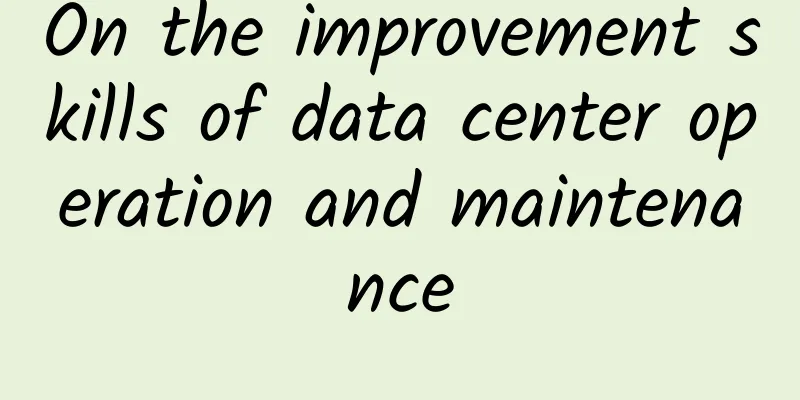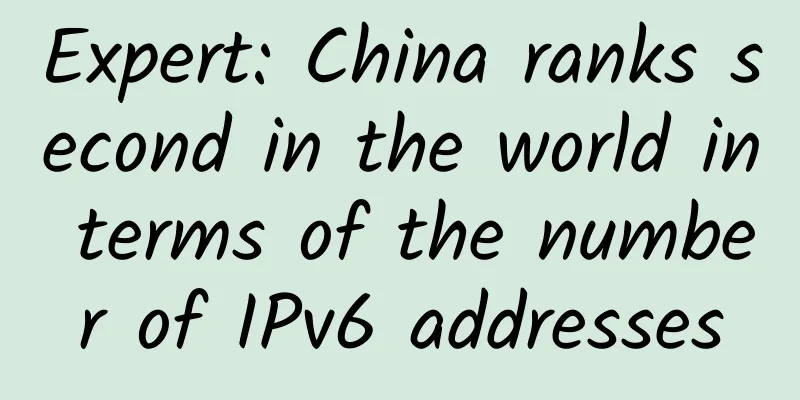Developing strategies at the data center level

|
Data centers are the infrastructure for modern businesses to run their businesses. They power the IT systems that run complex businesses, including servers, backup systems, network equipment, and other technical components. There are currently more than 8.5 million data centers distributed around the world, and there are currently more than 3 million data centers in the United States.
Keeping IT systems up and running is critical. However, not all IT infrastructure and business needs are the same. That’s why data center tiers exist. This term refers to the different types of systems, components, and infrastructure configured in a data center divided into groups or tiers. Each level is designed to meet specific IT and equipment needs. For example, the top level of a data center involves the basic needs of the infrastructure, while the fourth level consists of the most complex components. Let's take a look at each level of a data center. Data Center Tier Standards and Requirements Understanding how data center tiers work is essential to designing an effective IT strategy. The tier classification system was created by the Uptime Institute in the mid-1990s. Since then, the framework has evolved from shared industry terminology to a global standard that includes third-party verification of critical data center infrastructure. The data center tier system is progressive, meaning each tier builds on the tier below it and incorporates requirements from lower tiers. Here is the role each tier plays in a data center: ***Tier: Basic Capacity A Tier 4 data center facility contains dedicated infrastructure to support information technology outside of an office environment. It can be viewed as a tool to achieve operational sustainability at a tactical level. Uptime Institute notes that an organization's Tier 4 data center needs are primarily driven by time-to-market and initial cost issues rather than lifecycle costs. It typically includes:
Second level: redundant capacity components Tier II data center frameworks contain redundant critical power and cooling components. These measures provide a level of security against power outages and other major events that could shut down or damage systems. Tier II is also tactical in nature. Most organizations that rely on Tier I and Tier II capabilities do not require real-time capabilities, according to the Uptime Institute. Tier II systems and equipment typically include:
Level 3: Parallel maintainable systems Tier III data center facilities can operate without impacting IT systems during data center equipment upgrades, changes, or maintenance. Data centers with Tier III capabilities avoid disruptions or downtime by establishing redundant transmission paths for power and cooling. Uptime Institute notes that the effective life of Tier III (and Tier IV) data center infrastructure solutions exceeds current IT requirements. More importantly, they are often utilized by organizations that recognize the cost of disruption or damage, which is measured in actual losses and market share. Level 4: Fault Tolerance The infrastructure of a Tier IV data center builds on the capabilities of a Tier III facility by building fault tolerance into the data center topology. Fault tolerance describes the ability to limit the impact of an outage or disruption before it impacts IT operations. It is especially important for mission-critical applications and systems. This tier represents the most strategic level of protection. It typically involves multiple redundant systems. Data Center Tier List The development and evolution of data centers As data centers become more complex and interconnected, and high-performance computing (HPC) workloads and cloud computing have become mainstream applications in the enterprise, data center tiering strategies must address new and different issues. Modern equipment is undoubtedly different from the data centers of the 1980s, which were usually equipped with mainframes or mid-sized supercomputing systems. In order to adopt the right data center tier, it is particularly important to understand how the service provider builds and maintains its data center. There are several key factors, which in some cases may be related to industry organizations and standards, such as those created by the Telecommunications Industry Association (TIA). Key factors may include:
Data Center Tiers and Cloud Computing When organizations want to build a more flexible and agile IT framework, hosted data centers and various cloud computing facilities (including hybrid clouds) require close attention and different considerations. In fact, today's data center is often a large private cloud.
How to Develop a Data Center Strategy The starting point for understanding data center tiers is to understand the needs of the organization and how a tiered strategy fits in, especially as cloud computing accelerates. The challenge of vetting cloud computing vendors grows as enterprises adopt the services of external data center service providers and, in some cases, use cloud computing services from cloud computing vendors. As a result, many organizations are turning to outside organizations to assess their data centers based on their compliance with a specific tier. However, the Uptime Institute is the only organization that rates and certifies data centers. This ensures that the facility is built as designed, that the site functions and equipment works as billed, and that the data center can demonstrate performance standards that match its tier designation. However, it is worth noting that some organizations now use standards that exceed those of the Uptime Institute and TIA. It is also important to realize that tiering is not the only consideration when selecting a data center provider. Configuration management, security, usage levels, licensing requirements, disaster recovery, and possibly rack capacity and density issues are also important considerations. For businesses looking to connect to data center tiers, it is also important to understand the specific services provided and the guaranteed quality of service (QoS) levels. Key Steps to Improve Stratification It is important to match your organization's requirements with the appropriate data center tier. Here are some tips for determining your enterprise needs and establishing the appropriate data center tier level: Step 1: Assess business needs Understand the specific availability and performance requirements of various enterprise systems and applications. For example, a branch office of a financial services company does not require the same level of performance and protection as an e-commerce system or a securities trading system. This assessment may need to be extended to supply partners and customers. Step 2: Determine the level of risk What types of outages or downtime are likely? How would an outage or system failure affect the business? If a system or application were to fail for a few minutes or hours, what would the cost be in terms of financial loss and reputation? It is critical to document the cost of a business outage and compare it to the cost of maintaining or purchasing a specific data center tier. Step 3: Evaluate internal needs and/or external suppliers Determine what changes you need to make when running your own data center? If you are looking for compute, bandwidth or cloud resources from an outside provider, determine the vendor's certifications, rankings, policies, procedures, protections and the service-level agreements they offer (including compensation for noncompliance). Step 4: Map the system into layers With all the necessary information at hand, enterprises can determine what makes sense and what factors will minimize costs while mitigating risk. It is critical to avoid vague language and decisions and ensure that all tiering decisions are based on specific and defensible criteria. It is also critical to establish notification systems to understand if and when a data center does not meet established tiering standards. Data Center Tier Strategy: The Cutting Edge What is the most important step in your data center tiering strategy? Understanding exactly why it is important to have a comprehensive strategy in place. Paying attention to the data center tier can help companies improve performance, reduce costs and ensure that the business supports current and future technology and performance requirements. According to AFCOM's 2018 Data Center Industry Status Study, the need for due diligence is growing. Currently, nearly 60% of companies have 2 to 9 data center facilities, but by 2021, the average number of data centers managed by organizations will increase to 10.2. In addition, many existing data center facilities will need renovation and transformation. What is certain is that as an organization grows and evolves, and business-critical services become mandatory, executing a data center tiering strategy becomes increasingly important. It will be core to successful IT and business. |
>>: The data center dilemma: Is data destroying the environment?
Recommend
Expert Viewpoint: Is it time to go wireless?
Regardless of any technical requirements, the adv...
Why ICO made a mistake and blockchain will still lead the era
Since the release of the one-size-fits-all policy...
The Internet can also get stuck?! There are three magic weapons to solve it!
Highways will be congested, and the Internet, the...
The average monthly salary of 5G talents exceeds 14,000 yuan, and Beijing, Shanghai and Shenzhen are most in need of talent
As 5G commercialization approaches, the demand fo...
To cope with the global food crisis, AI, 5G and machine vision join forces to "raise fish"
Today, the global food challenge has become a rea...
We will bear the consequences of irresponsible criticism of operators.
There was a problem with the telecom broadband at...
6G brings an innovative revolution, but also hides many crises and challenges
Although 6G will not be implemented until 2030, t...
Make the network run autonomously like a driverless car
[51CTO.com original article] Juniper Networks Glo...
Hard-core dry goods: HTTP timeout, repeated requests must see the pitfalls and solutions
[[351757]] 1 Timeout, unavoidable pain HTTP call ...
Officials have spoken! 5G network full coverage is too far away, and it will take another five to eight years to achieve
Although China's 4G network is not the best i...
Sharktech: 1Gbps unlimited traffic/60G high-defense server starting at $79/month, available in Los Angeles/Denver/Chicago/Netherlands data centers
Sharktech has integrated resources and updated in...
5 Things That Can Slow Down Your Wi-Fi Network
Wi-Fi networks can be slow due to the use of olde...
V5.NET: 20% off on all dedicated servers, Hong Kong E3 servers starting at 342 yuan per month
V5.NET has launched a regular promotion this mont...
Practice: Ping suddenly has high latency? Spanning tree architecture, the Cisco switch that is highly praised by network engineers is also suffering from the old sin!
Background Party A is a ship machinery parts manu...
The Importance of PoE in Surveillance and Remote Security Systems
Many devices on the network today, such as IP cam...









